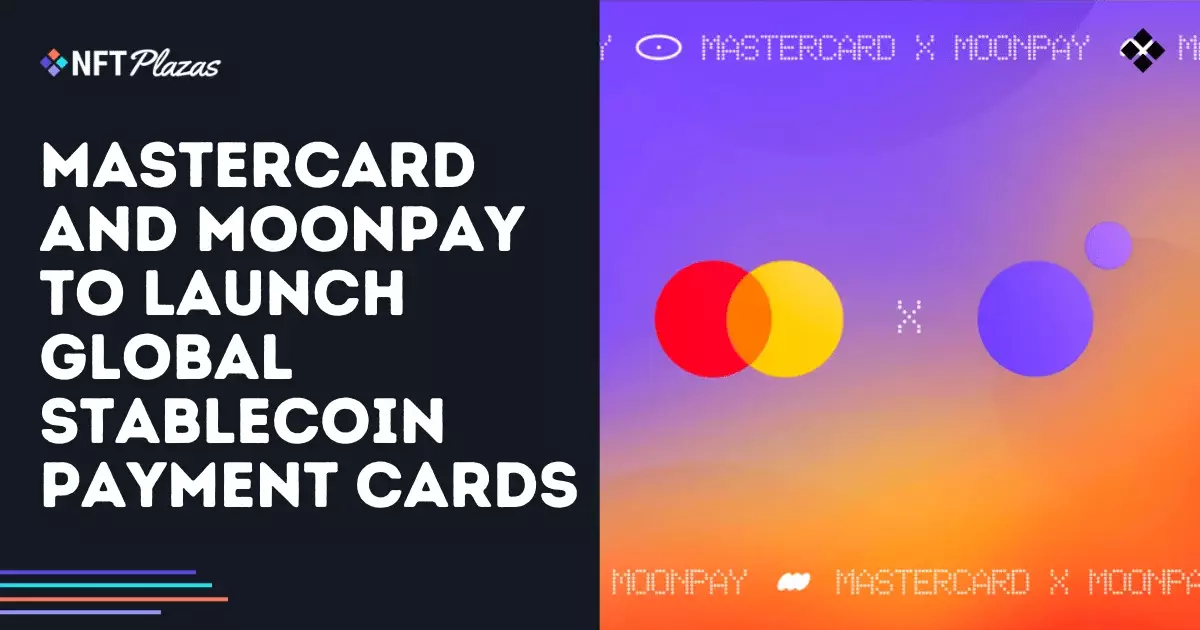Mastercard’s recent collaboration with MoonPay marks a pivotal moment in the landscape of cryptocurrency transactions. By introducing new payment cards that facilitate transactions using stablecoins, Mastercard is making it increasingly clear that it perceives a significant future for digital financial assets, particularly stablecoins. The partnership will leverage the backend technology of Iron, enhancing the reliability and user experience of transactions without the hassles of crypto volatility. This robust engineering paves the way for seamless interactions between traditional finance and a burgeoning crypto economy, thus bridging a crucial gap for both consumers and businesses alike.
Stablecoins: A Safer Bet?
The volatility of cryptocurrencies has long been a concern for users. Stablecoins like USDC and USDT aim to mitigate these risks by pegging their value to stable assets such as the US dollar. By enabling consumers to transact with such instruments, Mastercard is arguably presenting a safer alternative for those hesitant to dive deep into the crypto pool. Furthermore, the automatic conversion of stablecoins into fiat at the point of sale provides a necessary safety net, one that smartly sidesteps the complexities associated with managing crypto wallets. Perhaps this marks the start of a more robust acceptance of digital currencies within our everyday lives—not as a speculative investment but as a transactional currency.
Regulatory Clouds Still Looming
However, while this move is a progressive step towards normalizing stablecoins, the regulatory landscape remains murky. The U.S. Securities and Exchange Commission (SEC) has indicated that some stablecoins may not be classified as securities, leaving a significant part of the market in uncertainty. The absence of clear guidelines on yield-bearing or algorithmic stablecoins only amplifies concerns about the legal status of such financial instruments. Yet, Mastercard’s bold initiative could compel regulators to clarify the rules of engagement, ultimately leading to a more structured environment conducive to innovation. As countries worldwide refine their frameworks, institutions like Mastercard and Visa are taking calculated risks that could help define the future of finance.
Global Scale in Sight
Despite the lack of specific timelines or countries for the rollout, the ambition of a global scale is evident. The reach of Mastercard combined with MoonPay’s technology could serve as a powerful catalyst for widespread adoption. Visa has already initiated stablecoin pilot programs across six Latin American countries, setting the stage for a competitive landscape where consumer choice prevails. This burgeoning ecosystem is not merely a product of technological advancements; it reflects a vital shift in consumer behavior. Individuals are increasingly demanding secure and efficient payment solutions, and Mastercard’s entry into this space is a direct response to that need.
Shifting Perspectives: A Center-Right Liberal Outlook
In a world where cryptocurrencies are often vilified as a major threat to established financial systems, Mastercard’s approach embodies a center-right liberal perspective. It recognizes the potential for integrating advanced financial technologies while advocating for responsible regulatory frameworks. Rather than casting crypto assets aside, these partnerships signal an openness to innovation combined with a cautionary tale of regulations. This balanced viewpoint positions Mastercard not just as a payment processor but as a forward-thinking entity willing to engage with transformative ideas while ensuring safeguards to protect users.
Mastercard’s advances in stablecoin payments reflect a calculated gamble that might revolutionize our understanding of money. As the financial landscape evolves, it will be fascinating to see how these partnerships shape user behaviors and the broader regulatory environment in the years to come.


Leave a Reply